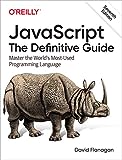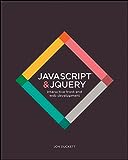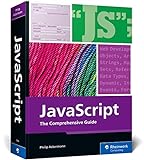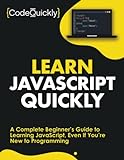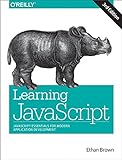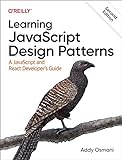In GraphQL, you can update nested data by using nested input types in your mutations. This allows you to specify the data you want to update at any level of nesting within your schema.
To update nested data, you need to create an input type that represents the nested structure of the data you want to update. This input type should mirror the structure of your schema, with each nested field corresponding to a nested input object.
In your mutation resolver, you can then use this nested input type to update the data at any level of nesting. By passing in the nested input object, you can specify exactly which fields you want to update and how you want to update them.
Overall, updating nested data with GraphQL involves defining a nested input type that represents the structure of your data and using this input type in your mutation resolver to update the nested data as needed.
How to update nested data with GraphQL mutations?
To update nested data with GraphQL mutations, you can use input types to specify the nested structure of the data you want to update. Here is a general outline of how you can update nested data with GraphQL mutations:
- Define input types for the nested data you want to update. This input type should mirror the structure of the nested data in your schema.
- Create a mutation that takes the input type as an argument. This mutation should accept the necessary arguments to identify the parent object to be updated and provide the nested data to be updated.
- Implement the resolver for the mutation. In the resolver function, extract the relevant information from the arguments and use it to update the nested data in your database.
- Make sure to handle any necessary validation and authorization checks in your resolver to ensure that the update is allowed.
Here is an example of a GraphQL mutation that updates nested data:
1 2 3 4 5 6 7 8 |
input UpdateUserAddressInput { userId: ID! address: String } type Mutation { updateUserAddress(input: UpdateUserAddressInput): User } |
In this example, the UpdateUserAddressInput input type specifies the structure of the nested data to be updated, which includes the userId to identify the user and the address field to be updated. The updateUserAddress mutation takes the input type as an argument and returns the updated user object.
In the resolver for the updateUserAddress mutation, you would extract the userId and address fields from the input argument, locate the user in your database using the userId, update the user's address with the provided value, and return the updated user object.
By using input types and defining appropriate mutations and resolvers, you can easily update nested data in GraphQL using mutations.
What is the importance of defining data structures for nested data in GraphQL?
Defining data structures for nested data in GraphQL is important for several reasons:
- Clarity and organization: Defining data structures helps in organizing and structuring the nested data in a clear and understandable manner. It makes it easy to visualize the relationships between different data elements and helps developers understand how data is nested within each other.
- Query efficiency: By defining data structures, developers can specify exactly what data they need to retrieve from the server. This helps in reducing unnecessary data fetching and improves query efficiency. It also helps in optimizing the performance of the GraphQL queries.
- Consistency: Defining data structures ensures that the nested data is consistent across different queries and responses. This helps in maintaining a consistent data structure throughout the application and avoids any inconsistencies or errors in data retrieval.
- Schema validation: By defining data structures, developers can enforce schema validation rules for the nested data. This helps in ensuring that only valid and correctly structured data is passed between the client and server, leading to a more robust and reliable application.
- Ease of development: Defining data structures provides a clear blueprint for developers to work with when querying and manipulating nested data. It helps in reducing ambiguity and confusion, making it easier for developers to work with nested data in GraphQL.
How to effectively query nested data in GraphQL?
To effectively query nested data in GraphQL, you can use GraphQL's syntax to access nested fields within your query. Here are some tips to help you query nested data effectively:
- Use aliases: Aliases allow you to rename the fields in your query results, making it easier to distinguish between fields with the same name in nested objects. For example, you can use aliases like this:
1 2 3 4 5 6 7 8 9 10 11 12 |
{ parent { child1 { fieldA: nestedField1 fieldB: nestedField2 } child2 { fieldA: nestedField1 fieldB: nestedField2 } } } |
- Use fragments: Fragments allow you to reuse query fields across multiple queries. This can be especially useful when querying nested data as it can help reduce duplication in your queries. For example:
1 2 3 4 5 6 7 8 9 10 11 |
fragment nestedFields on NestedType { fieldA fieldB } { parent { child1 { ...nestedFields } child2 { ...nestedFields } } } |
- Use variables: Variables allow you to pass parameters into your query, which can be useful for querying nested data based on specific criteria. For example, you can pass variables like this:
1 2 3 4 5 6 7 8 |
query GetNestedData($someParam: String!) { parent { child1(filter: $someParam) { fieldA fieldB } } } |
- Use GraphQL's introspection features: GraphQL has built-in introspection features that allow you to explore the schema of your API. You can use tools like GraphiQL or GraphQL Playground to explore the nested data structure of your API and construct your queries accordingly.
By following these tips and utilizing GraphQL's features, you can effectively query nested data in GraphQL and retrieve the specific data you need from your API.
What is the recommended approach for updating deeply nested data in GraphQL?
The recommended approach for updating deeply nested data in GraphQL is to use the concept of input types and mutations.
- Define an input type that represents the data structure you want to update. This input type should match the nested structure of your data.
- Create a mutation that takes this input type as an argument and returns the updated data. This mutation should handle the updating logic and make the necessary changes to the nested data structure.
- Use the mutation to update the deeply nested data by passing the input type with the new values to the mutation.
By following this approach, you can easily update deeply nested data in GraphQL without having to manually traverse the nested data structure. It also helps to keep your GraphQL schema clean and organized.
What is the role of resolvers in handling nested data in GraphQL?
Resolvers are used in GraphQL to fetch data from a data source and provide responses to client queries. When it comes to handling nested data, resolvers play a crucial role in resolving nested fields in GraphQL queries.
In GraphQL, queries often include nested fields that require data from multiple sources or require additional processing to retrieve the requested information. Resolvers are responsible for handling these nested fields by executing the necessary logic to fetch the data from the appropriate sources and returning the results to the client.
Resolvers can be defined for each field in a GraphQL schema, including nested fields, allowing developers to specify how data should be fetched or computed for each field. By defining resolvers for nested fields, developers can efficiently handle nested data structures and resolve complex queries with ease.
Overall, resolvers play a key role in handling nested data in GraphQL by enabling developers to retrieve and process data from various sources to fulfill client queries effectively.
What is the recommended way to document nested data structures in GraphQL schemas?
The recommended way to document nested data structures in GraphQL schemas is by using comments within the schema definition itself. These comments should be clear, detailed, and specific to each field or type within the schema. Additionally, it is also recommended to use tools like GraphiQL or GraphQL Playground to visually represent the schema and help developers understand the structure and relationships of the data. This can also be supplemented with external documentation or documentation generated from the schema definition using tools like GraphQL schema documentation generators.
